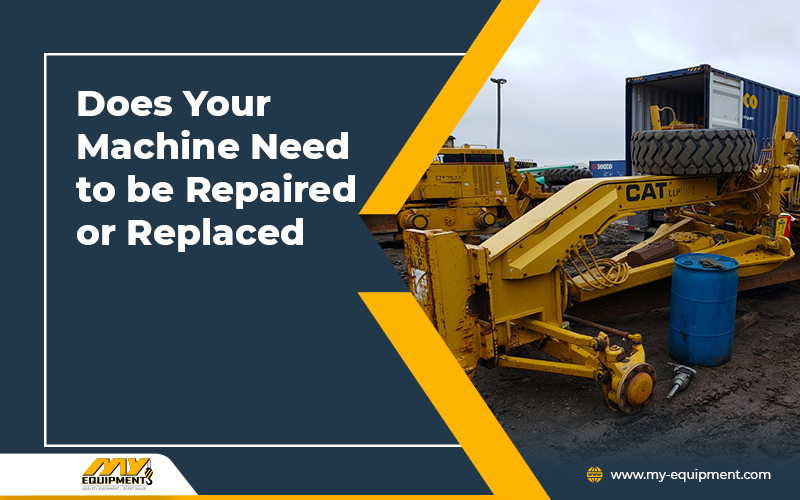For any business, heavy machinery is a major asset, so once it starts giving you trouble, you need to make sure that you make the right decision about it. The decision you make should be economically sound so that you do not incur more loss. Some companies have replacement schedules, and once a machine has worked a set number of hours, they are automatically replaced.
If your organization does not have a mandatory replacement schedule, you will have the option to either repair, rebuild, or replace the machine. Which option is right for your business depends on a few different factors such as the machine’s overall condition, age, and the financial condition of your organization. When you are thinking about what to do with a faulty machine, you need to first understand the financial implications of your decision and determine whether it would be practical for your business.
Things to Consider When You Are Contemplating Whether to Repair, Rebuild or Replace Your Equipment
The more hours a machine works, the more repairs it will need, and both the cost and severity will keep increasing steadily. A good way to decide what to do with such a machine is to use the 50/50 threshold rule. Per this rule, replacing the machine is not necessary until its repair costs exceed half the cost of its replacement.
While the 50/50 rule is helpful in a lot of situations, it cannot always be used because the point of failure for every machine is different. For instance, if a machine is poorly maintained and used by inexperienced operators, it will reach the end of its useful life way before its time. However, if the same machine is rarely used and maintained properly, it may outlive its expected life cycle.
To determine the machine’s expected expenses more accurately, conduct a life cycle cost analysis. In a LCCA, the expenses are determined by evaluating the cost of ownership and the cost of operation of the machine. You can determine what the most economical decision will be for your business by creating and analyzing hypothetical scenarios. You can decide if it would cost you more to keep and repair the machine or to replace it altogether. A lot of people sell their CAT used machinery because they cannot afford to maintain them anymore.
When to Repair
If only a few components of the machine need fixing, you should choose to repair the machine. Repairs are a good idea if you are covered by a valid warranty. Also, if you still have use for the equipment for an upcoming project, it would be easier if you just replace a few parts and tune up the machine instead of rebuilding or replacing the equipment.
When to Replace
You should wait until you are facing excessive repairs to replace your equipment. This usually happens after the warranty on the machine has expired. If you find yourself in a situation where the ownership costs are less than operating costs, it may be time to replace the equipment. Usually, the number of repairs a machine needs increases in frequency so replacing it is the smarter, more cost-effective option.


 1400 Broadfield Blvd, Houston, TX 77084,
USA.
1400 Broadfield Blvd, Houston, TX 77084,
USA. omer@my-equipment.com
omer@my-equipment.com